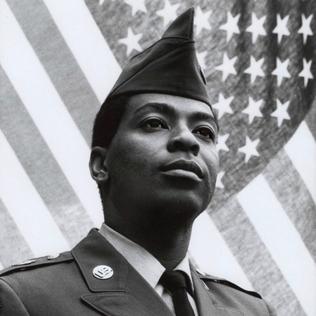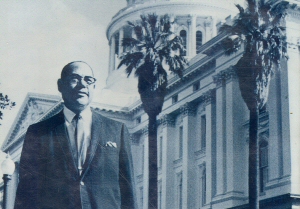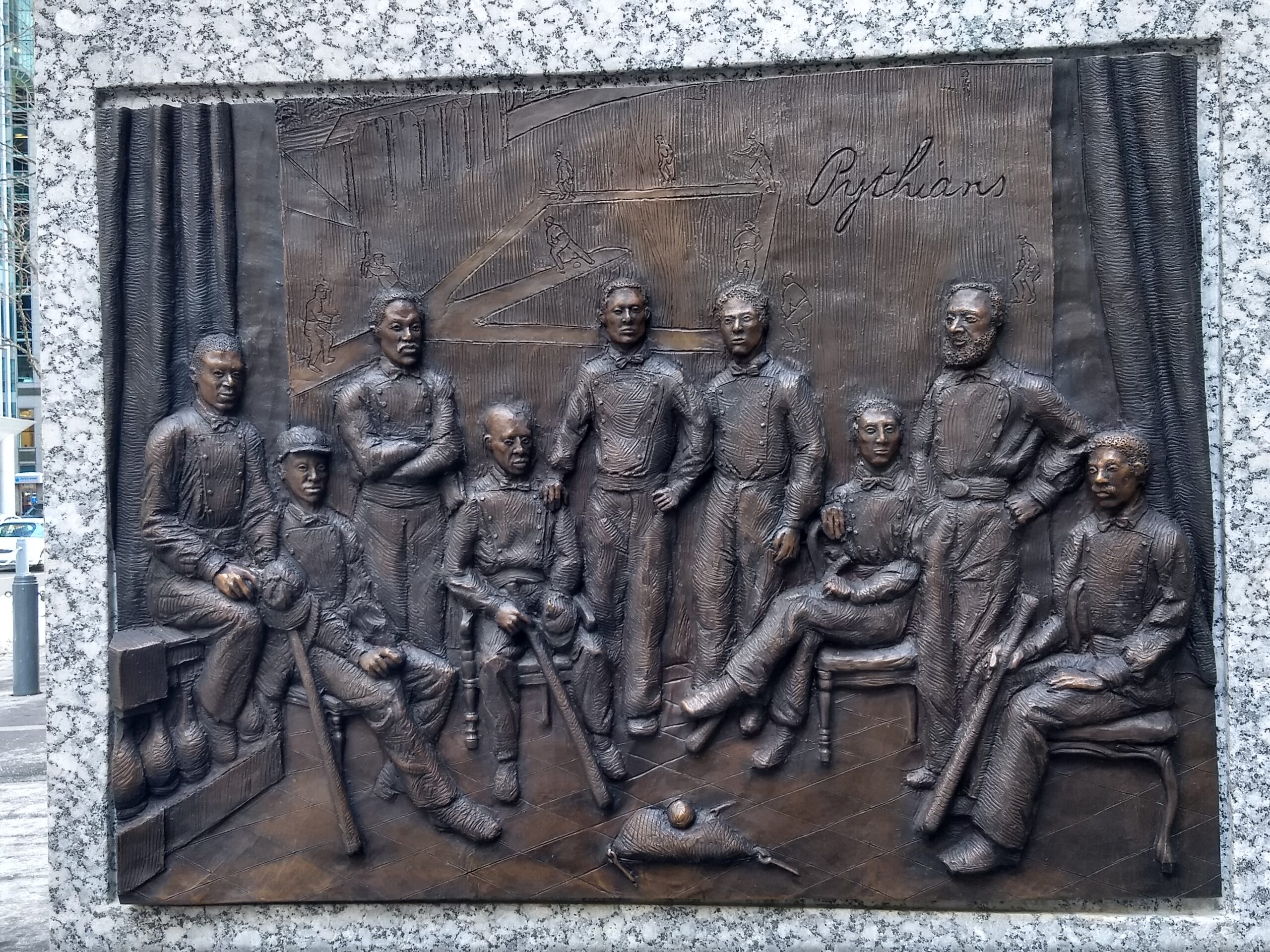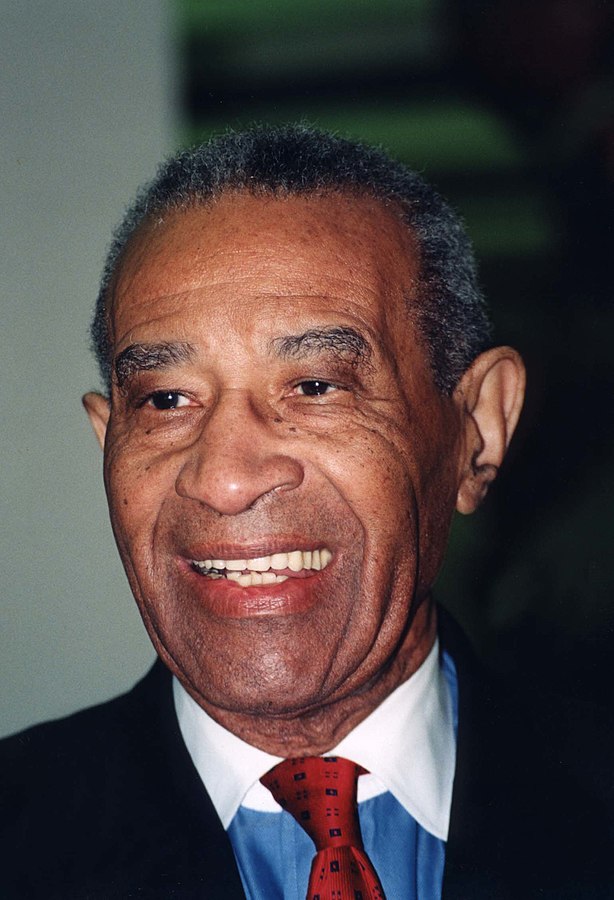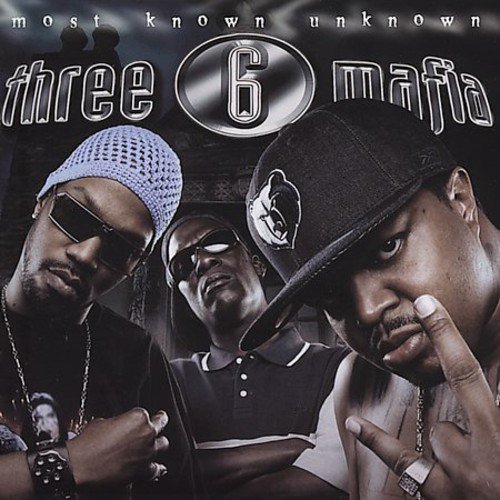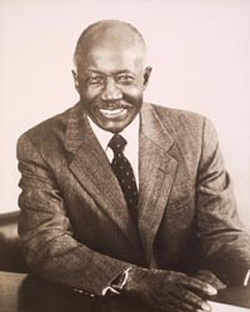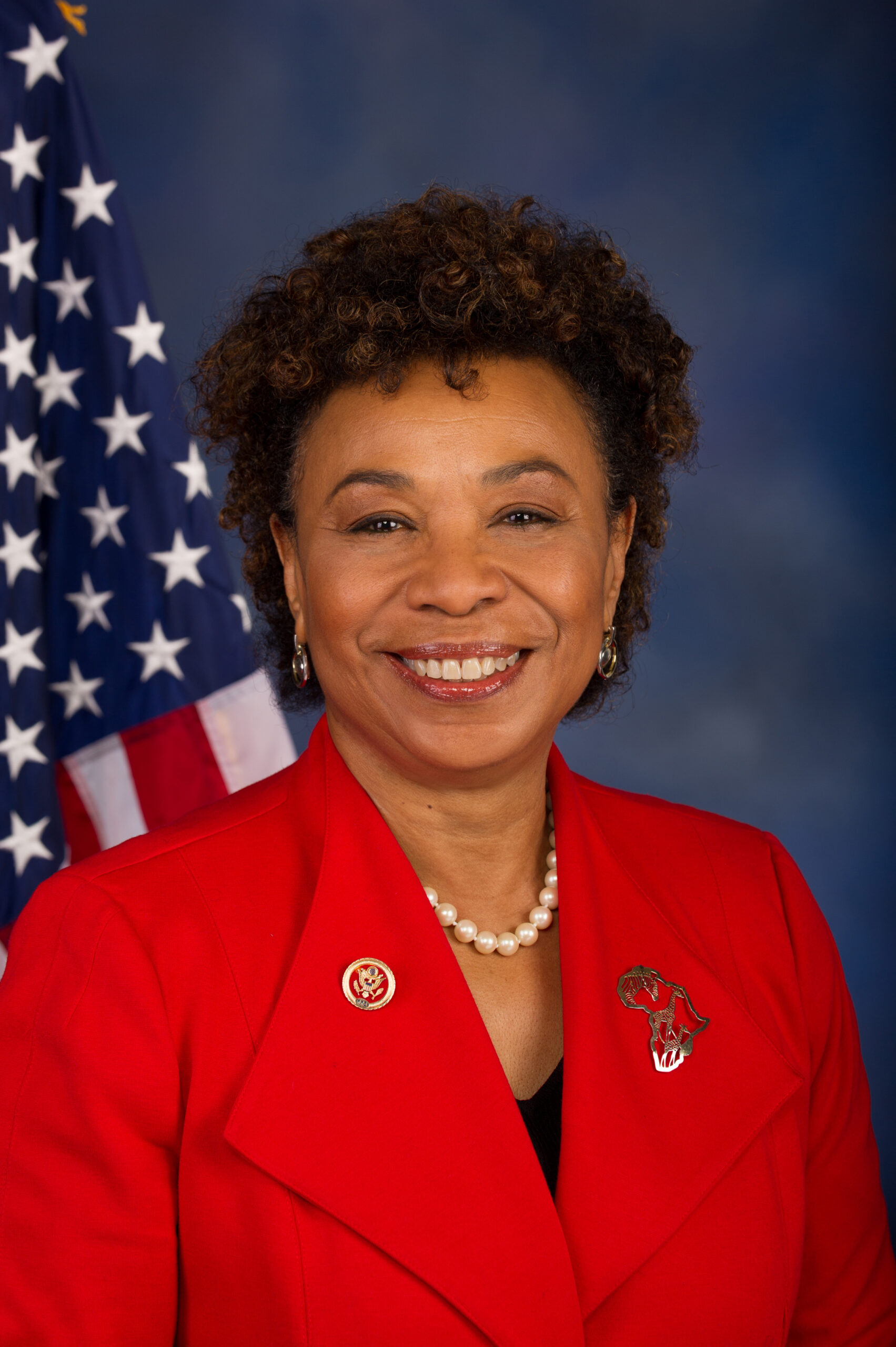Asa Philip Randolph, born on April 15, 1889 in Crescent City, Florida, was one of the most respected leaders of the American Civil Rights Movement in the twentieth century. Randolph was a labor activist; editor of the political journal The Messenger; organizer of the 1941 March on Washington Movement, which resulted in the establishment of the Fair Employment Practices Committee (FEPC); and architect of the 1963 March on Washington for Jobs and Freedom.
Randolph was the son of Rev. James William Randolph, a minister in the African Methodist Episcopal Church, and Elizabeth Robinson Randolph, a seamstress. The family moved to Jacksonville two years after his birth. In 1907, Randolph graduated as the valedictorian of Cookman Institute in East Jacksonville, Florida, and worked a series of menial jobs while pursuing a career as an actor. He moved to New York in 1911 and after reading W.E.B. DuBois’ The Souls of Black Folk decided to devote his life to fighting for African American equality. In 1914, Randolph married Lucille E. Green, a Howard graduate and entrepreneur whose economic support allowed Randolph to pursue civil rights full time. The couple did not have any children.
While taking classes at the City College of New York and New York University, Randolph met the black socialist Chandler Owen, who shared his commitment to progressive politics and black equality. By 1917, the two founded the socialist magazine The Messenger. Although The Messenger was not financially successful, its editorials against lynching and segregation, its opposition to African American participation in World War I, and its advocacy of radical unionism were widely influential in black communities. At the same time, Randolph began his career as a labor organizer working to create a union for elevator operators in New York.
Randolph drew upon these experiences in 1925 to create the Brotherhood of Sleeping Car Porters (BSCP). The Pullman Company was the largest single employer of the African Americans in the nation at the time. Many of the 10,000 Pullman Porters were college graduates and highly respected in their own communities, yet on the job they were subjected to low wages, disrespectful treatment, and discriminatory practices.
Randolph led the BSCP for ten years, ultimately receiving recognition from the Pullman Company in 1935 as well as nearly two million dollars in increased wages, a shorter work week, and overtime pay. He continued his struggles for economic equality during the 1930s by serving as president of the National Negro Congress, an organization created to pressure President Franklin Delano Roosevelt (FDR) to institute policies designed to treat African Americans fairly in the workplace and to protect their civil rights. Randolph resigned in 1939, concerned over the increasing presence and influence of Communists in the organization.
As World War II loomed, Randolph’s concerns shifted to segregation in the military and the exclusion of black workers from defense industries and war production employment. After the collective lobbying efforts of Randolph, the National Association for the Advancement of Colored People (NAACP) and the Urban League failed to sway FDR to end segregation in the military and defense industries, Randolph initiated the March on Washington Movement. He argued, “There must be no dual standards of justice, no dual rights, privileges, duties or responsibilities of citizenship. No dual forms of freedom.” He called for thousands of blacks to assemble at the Lincoln Memorial in Washington, D.C. on July 1, 1941 to demand FDR take action. When Randolph refused to call off the march, FDR issued Executive Order 8802 banning discrimination in defense industries and created the FEPC for the duration of World War II. By 1943 labor shortages and the FEPC led to a dramatic increase in African American employment. This newfound access to defense industry employment, in turn, facilitated the mass migration of more than 5.5 million African Americans to defense centers located in northern and western cities.
Randolph continued to campaign for the desegregation of the U.S. military. In 1946, he created the Committee Against Jim Crow in Military Service, later called the League for Non-Violent Civil Disobedience. In response to increasing black political power and protest, President Harry S. Truman desegregated the military with Executive Order 9981 on July 26, 1948. In 1950, Randolph co-founded the Leadership Conference on Civil Rights to coordinate the legislative activities of a number of organizations working against racial discrimination.
While Randolph’s civil rights contributions were substantial, he is perhaps best known, along with Bayard Rustin, as the architect of the 1963 March on Washington. This march offered Martin Luther King, Jr. the forum for his famous “I Have a Dream” speech and is credited with creating the momentum that led to the Civil Rights Act of 1964. Randolph continued to advocate political and economic equality throughout his life, founding the Negro American Labor Council, serving on the AFL-CIO Executive Council and establishing the A. Philip Randolph Institute, a jobs training center.
A. Philip Randolph died in New York City on May 16, 1979 at the age of 90.




